Journal of
eISSN: 2373-437X


Research Article Volume 9 Issue 1
1Lecturer in Agricultural Product Technology Study Program, Faculty of Agriculture, Muhammadiyah University Mataram, Indonesia
2Student in Agricultural Product Technology Study Program, Faculty of Agriculture, Muhammadiyah University Mataram, Indonesia
Correspondence: Adi Saputrayadi, Lecturer in Agricultural Product Technology Study Program, Faculty of Agriculture Muhammadiyah University Mataram, Mataram, Indonesia
Received: May 29, 2021 | Published: February 26, 2021
Citation: Saputrayadi A, Asmawati, Sulastri Y, et al. Ratio the addition of soursop fruit extracts to several components of the quality sweet corn milk yogurt. J Microbiol Exp. 2021;9(1):22-27. DOI: 10.15406/jmen.2021.09.00318
Corn milk yogurt can be made so that the resulting types of fermented milk products in different forms. One ingredient that can be added is soursop fruit extract to increase levels of vitamin C because soursop fruit has a high Vitamin C content of 20.00 mg. This study aims to determine the effect of the ratio of the addition of soursop fruit extracts to several components of the quality of sweet corn milk yogurt. The research method used was an experimental method. This study was designed using a Completely Randomized Design (CRD) with various treatments as follows: T1 = soursop fruit extract 0 ml + 250ml sweet corn milk, T2 = soursop fruit extract 12.5ml + sweet corn milk 237.5ml, T3 = 25ml soursop fruit extract + 225ml sweet corn milk, T4 = 37.5ml soursop fruit extract + 212.5ml sweet corn milk, T5 = 50ml soursop fruit extract + sweet corn milk 200ml. The research data were processed by analysis of diversity (Analysis of Variance) at 5% significance level and if there were treatments that had a significant effect, it was continued with BNJ test at 5% level. The results showed that the ratio of the addition of fruit extracts soursop has a significant effect on all parameters of chemical properties, namely lactic acid, pH value, vitamin C content and organoleptic properties, namely color, smell, taste and texture. The higher the ratio of the addition of soursop fruit extract, the higher levels of lactic acid and vitamin C levels while the pH value is lower. The higher the ratio of the addition of soursop fruit extracts, the color score of organoleptic values with the criteria of cream, the taste with the criteria of very like and the smell with the criteria of very like while the thickness decreases with the criteria being rather thick. The best addition ratio of soursop fruit extract was obtained in T5 treatment, which was a mixture of 50 ml of soursop fruit extract with 200 ml Sweet corn.
Keywords: soursop fruit extract, cornmilk yogurt, yogurt, sweet corn, Annona muricata
Corn (Zea mays) is one of the alternative food ingredients to replace rice and is very popular with the people of Indonesia. Besides, corn is also a source of raw materials for the industrial sector including the food industry. Various types of corn such as sweet corn, popcorn, flour corn, and others are frequently used in the food industry for different purposes. One type of corn that is widely used is sweet corn.1 The development of the livestock industry in Indonesia has the potential to increase demand for corn, which in turn will also increase the market potential for corn commodities. Besides in the livestock sector, corn is also widely used as food for humans. Utilization of corn as food has begun to be glimpsed by the community, especially its role and function as a substitute or supplement for food made from rice. Currently, there are already many food products based on corn in the market, such as corn flour, which people are starting to look at as an alternative ingredient for cakes or other processed food products.2
Corn production in Indonesia is very abundant in number so that many corn plants/easily obtained as a new corn breakthrough can be made as milk that can be consumed by the community as a source of nutrition with a practical and attractive presentation. Specifically, in NTB Province, corn production from 2011 was 639,773 tons of dry shelled, in 2012 which reached 642,674 tons of dry shelled and in 2013 which reached 652,686 tons of dry shelled. Whereas the year 2014 was 654,876 tons of dry shelled rice. The increase in production was due to the increased corn harvest area from year to year.3
According to Wariono,4 that in corn especially sweet corn contained carbohydrates including starch consisting of amylose and amylopectin, sugar in the form of fructose and crude fiber. In addition, there are also phosphorus, iron, calcium and protein. Furthermore, according to Fajri,5 the part that is rich in carbohydrates is the seed. Most carbohydrates are in endospermium. Carbohydrate content can up to 80% of all seeds dry matter. Carbohydrates in the form of starch generally a mixture of amylose and amylopectin. In glutinous corn, most or all of the starch is amylopectin.
Corn protein has a fairly good amino acid composition, but the amino acids lysine and tryptophan are present in small amounts. Corn can be processed into corn milk. Corn milk is a beverage that has a very important position. Corn milk is obtained by grinding corn seeds that have been boiled in water, the results of refining are filtered to obtain the filtrate which is then pasteurized and flavored to enhance the taste. The utilization of corn milk into Yogurt is one way to improve the quality of corn. Yogurt from corn milk has good nutritional content for consumption.6
Variations in corn milk yogurt can be made to produce fermented milk products in different forms. According to Suriasih,7 that only 10.6-21% of consumers like "plain yogurt". The rest of 76-89.4% prefer yogurt with fruit flavor and sugar added. One ingredient that can be added is soursop fruit extract (Annona muricata) to increase the levels of vitamin C found in yogurt, corn milk and the smell of soursop fruit is also a special attraction for consumers. Soursop is an agricultural commodity that is widely grown in Indonesia. Soursop fruit consists of 67.5% fruit flesh, 20% fruit skin, 8.5% fruit seeds, and 4% fruit core. After water, the nutrient content in soursop is 16.3 g carbohydrates, 1.0 g protein, 0.3 fat and the most dominant vitamin in soursop fruit is vitamin C, which is about 20 mg per 100 grams of fruit flesh.8
The content of vitamin C in soursop is an excellent antioxidant to increase endurance and slow the aging process. The need for vitamin C per person per day (ie 60 mg) can be fulfilled by consuming 300 grams of soursop meat. Sour taste in soursop comes from nonvolatile organic acids, especially malic acid, and isositric acid.8 According to the results of Hansur9 research, entitled the addition of fruit extracts to some components for improving quality of corn milk yogurt obtained by the composition of a mixture of refined sweet corn and water that is 1: 3 and added 0.1% salt, skimmed milk powder with a ratio of 90: 10, bacteria Lactobacillus bulgaricus and Streptococcus thermophilus 5% with a composition of 1: 1. The fermentation process is carried out at 43oC for 9 hours. With this method, corn yogurt has a viscosity level of 17%, the acidity level of 0.9%, 4% sugar, water content as much 82.48%, protein 3.54%, fat 0.48%, and crude fiber 0.86%. The addition of fruit extracts needed in yogurt, in general, is between 5%-25% of the total volume of yogurt.
This research aims to: 1. Get the right ratio of adding soursop fruit extract (A. muricata) to produce sweet corn milk yogurt favored by panelists and 2. Determine the e ffect of the ratio of the addition of soursop fruit extract to several components of the quality of sweet corn milk yogurt.
The method used in this study is an experimental method by conducting experiments in the Laboratory. The experimental design used in the study was a Completely Randomized Design (CRD) with a single factor treatment, namely the ratio of the addition of soursop fruit extract to some components of sweet corn milk yogurt quality. Each treatment was repeated three times to obtain 15 experimental units, as follows: T1 = 0% soursop fruit extract + 100% sweet corn milk, T2 = 5% soursop fruit extract + 95% sweet corn milk, T3 = 10% soursop fruit extract +90% sweet corn milk, T4 = 15% soursop fruit extract + 85% sweet corn milk, and T5 = 20% soursop fruit extract + 80% sweet corn milk. Each treatment requires 250 ml of sample weight (a mixture of soursop fruit extract with sweet corn milk).
The parameters observed in this study include chemical properties in the form of total acid, vitamin C level, degree of acidity (pH) and organoleptic properties in the form of color, texture, taste, and smell. Data from observations were analyzed using analysis of variance (Analysis of Variance = ANOVA) at 5% significance level, if there were significantly different treatments then it was further tested with the Honestly Significant Difference test (BNJ) at the same 5% significance level (Yitnosumatro, 1991). The research was carried out through several stages as follows:
Making soursop fruit extract
Soursop fruit extract is carried out by the screening method10 with the following procedures: a. Sorted out- Sorting was performed to choose good soursop fruit, which was not rotten, such as mold, ants, and damaged ones. b. Washing- It was done to remove impurities attached to the soursop fruit with running water. c. Taking meat fruit- Flesh was obtained from the process of separation between the skin, liver and grains of fruit flesh to facilitate the next process. d. Warming up- Warming was done to kill microbes and soften it with droplets to facilitate the destruction process for 5 minutes and use a cormorant. e. The Destruction- This process was done to destroy the material with the addition of 1:1 water ratio, soursop fruit spraying was done using a blender. f. Filtering- Filtering was done to separate the pulp with soursop juice using a kitchen filter. g. Storage- Finally, the soursop juice was stored in the refrigerator at -180C.
Making corn extract
Making corn juice is done by the screening method10 with the following procedures: a. Corn preparations, Sweet corn is cleaned from the skin and corn hair. b. Washing, Washing is done to remove impurities that stick to the sweet corn with running water. c. Boiling, Boiling is done at a temperature of 1000C for 9 minutes to be able to soften the texture of corn kernels using a boiler. d. Sweeping, The ripe corn is then combed with a knife to make it easy to destroy. e. Destruction, Destruction is carried out with corn boiling water in a ratio of 1: 2 so that it is produced by grits using a blender. f. Filtering, Filtering is done to separate the pulp from the corn juice using a filter so that the corn juice is obtained.
The process of making sweet corn milk yogurt
The making of sweet corn milk yogurt is carried out by the incubation method11 with the following procedures: a. Mixing I, Prepared sweet corn extract (according to treatment), that is, 250; 237.5; 225; 212.5; 200 ml and add 12% (30 grams) of skim (w/v) milk and xanthan gum (w/v) of 0.1% (0.25 grams) to the corn juice. b. Mixing II, Soursop juice 0; 12.5; 25; 37.5; and 50 ml (according to treatment) conducted into a mixture of sweet corn milk. c. Homogenization, Soursop juice and sweet corn juice are mixed homogeneously with a mixer. d. Pasteurization, A mixture of pasteurization of soursop juice and sweet corn juice was carried out at a temperature of 80-850C for 15 minutes then cooled to a temperature of 40-420C. e. Inoculating Stater, The starter used is plain biokul. Plain biocules contain L. bulgaricus and S. thermopillus 5% in a ratio of 1: 1 (12.5: 12.5 ml), biocules are added as much 19 g.
Analysis of chemical properties
The research data and the results of the diversity analysis along with the results of further tests for the chemical properties in sweet corn milk yogurt are presented in Table 1. In Table 1 It shows that the ratio of the addition of soursop fruit extract significantly affects all parameters of chemical properties, namely lactic acid, pH values, and vitamin C levels of observed sweet corn milk yogurt, so that further tests are carried out with further tests Honestly Significant Difference (BNJ) at a real level of 5%.
Parameters |
F hitung |
F tabel |
Note |
Lactic acid |
719,847 |
3.48 |
S |
pH Value |
241,074 |
3.48 |
S |
Vitamin C levels |
348,998 |
3.48 |
S |
Table 1 Significance of Soursop fruit extract addition to properties chemistry of yogurt sweet corn milk
Note: S, significant (significant effect).
Lactic acid
In Figure 1 shows that the higher the ratio of the addition of soursop fruit extracts, the higher levels of lactic acid yogurt in sweet corn milk. The highest lactic acid was obtained in the treatment of T5 (soursop fruit extract 50 ml + 200 ml sweet corn milk) that is equal to 8.303%, and the lowest levels of lactic acid yogurt sweet corn milk obtained in the treatment of T1 (soursop fruit extract 0ml + 250ml sweet corn milk) that is equal to 1.257%. The relationship between the effect of the ratio of the addition of soursop extract to milk yogurt lactic acid levels Sweet corn can be seen in Figure 1.
The high levels of lactic acid produced in the T5 treatment was 8,303 due to the high addition of soursop fruit extract, which was 50ml to 200ml of sweet corn milk. Causing lactic acid levels in the quality component of sweet corn milk yogurt will increase. This is because lactic acid (C3H6O3) is the largest acid component formed from the fermentation of soursop fruit extract and skim milk into yogurt. This acid is one of the components that contribute to the flavor of yogurt. The lactic acid content of this sweet corn yogurt milk ranges from 1,257-8,303%. The biggest contribution to the formation of lactic acid is given by lactose which will be converted first into glucose and galactose which then through the process of glycolysis produces pyruvic acid which is then converted to lactic acid. According to Wood,12 the lactic acid component of yogurt ranges from 0.6-1.6%. Total acid titrated average yogurt at all three levels of treatment that is using soursop fruit extract with a concentration of T5 treatment (50ml soursop fruit extract + 200ml sweet corn milk) is still in the standard range of good yogurt.
pH value
In Table 2, Column 2 (pH value) shows that the more the ratio of the addition of soursop fruit extract, the pH value found in sweet corn milk yogurt is lower, and has a significant effect on the 5% significance level. The highest pH value was obtained in the treatment of T1 (0ml soursop fruit extract + 250ml sweet corn milk) which is equal to 7.817 and the lowest pH value was obtained in the treatment of T5 (50ml soursop fruit extract + 200ml sweet corn milk) which is equal to 4.127. The relationship of the effect of adding soursop fruit extract to the pH value of sweet corn milk yogurt can be seen in Figure 2.
Parameters |
F hitung |
F tabel |
Note |
Color |
2,967 |
2,492 |
S |
Smel |
9,714 |
2,492 |
S |
Taste |
8,569 |
2,492 |
S |
Thickness |
7,656 |
2,492 |
S |
Table 2 Significance of Soursop fruit extract addition to properties organoleptic of yogurt sweet corn milk
Note: S, significant (significant effect).
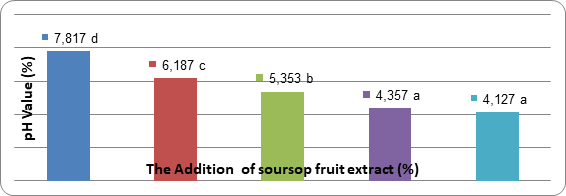
Figure 2 Graphic effect of fermentation time against the degree of acidity (pH) sweet corn milk yogurt.
The low pH value obtained in the treatment of T5 (50ml soursop fruit extract + 200ml sweet corn milk) is 4,127, caused by the highest addition ratio of soursop fruit extracts. The more soursop fruit extract added to sweet corn milk, the pH value of sweet corn milk yogurt is lower. This is because Lactobacillus bulgaricus grows predominantly and produces amino acids glycine, histidine, valine, glutamic acid, tryptophan, leucine and isoleucine. The presence of glycine and histidine will stimulate the growth of Streptococcus thermophillus. Coagulation of added soursop fruit extract and skim milk during incubation is caused by a decrease in pH due to starter activity. Conversely Streptococcus thermophillus causes a decrease in pH up to 5.0-5.5, then the pH decreases to 3.8-4.4 due to the formation of lactic acid, so that Lactobacillus bulgaricus can grow well and re-produce free amino acids.13
The more soursop fruit extract added to sweet corn milk, the pH value of sweet corn milk yogurt is lower because protein synthesis involves the formation of long chains of amino acids called peptide chains. Chemical bonds that link two amino acids to each other are called peptide bonds. This bond occurs because one hydrogen (H) from an amino group of an amino acid is united with hydroxyl (OH) from another amino acid carboxyl group. This process produces a water molecule, while the remaining CO and NH will form peptide bonds. Instead, these peptide bonds can be broken down into amino acids by acids or digestive enzymes by addition one water molecule. This process is called hydrolysis which can cause a decrease in pH.
Vitamin C levels
In Table 2, Column 3 (Vitamin C levels) shows that the more the ratio of the addition of soursop extracts the vitamin C level increases and gives a significant effect at 5% significance level. The highest levels of Vitamin C were obtained in the treatment of T5 (50 ml soursop fruit extract + 200 ml sweet corn milk) that is equal to 11,387% and the lowest level of vitamin C was obtained in the treatment of T1 (soursop fruit extract 0 ml + 250 ml sweet corn milk) that is equal to 3,370%. The relationship of the effect of adding soursop fruit extract to vitamin C levels of sweet corn milk yogurt can be seen in Figure 3.
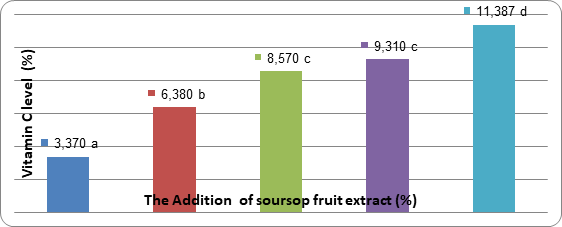
Figure 3 Graphic effect of fermentation time against the degree of vitamin C level sweet corn milk yogurt.
The high levels of vitamin C obtained at T5 treatment were 11,387%. This is because in the T5 treatment the highest addition of soursop fruit extract is 50ml + 200ml sweet corn milk so that the vitamin C level of yogurt in corn milk is high. This is in accordance with the opinion. Rahman,13 soursop fruit contains many vitamins, but the most dominant in soursop fruit is vitamin C, which is about 20 mg per 100 grams of fruit flesh. The content of vitamin C which is quite high in soursop makes this fruit as an excellent antioxidant to increase endurance and slow the aging process. Antioxidants are very beneficial for health and play an important role in maintaining the quality of food products.
Analysis of organoleptic properties
The research data and the results of the diversity analysis along with the results of further tests for the organoleptic properties in sweet corn milk yogurt are presented in Table 2.
In Table 2 It shows that the ratio of the addition of soursop fruit extract significantly affects all parameters of organoleptic properties, namely color, smell, taste and thickness of observed sweet corn milk yogurt, so that further tests are carried out with further tests Honestly Significant Difference (BNJ) at a real level of 5%.
Color score
Factors that determine the quality of food ingredients include color, taste, smell, and nutritional content. The color factor is very influential on the quality of a food ingredient because color can be seen directly visually, so directly the color factor can attract the attention of consumers. A food product that is considered nutritious and tasty will not be able to increase consumer interest if the color and food products are not pleasing to the eye or give the impression of having deviated from the actual color.14 In Table 2, Column 1 (color value) shows that the score of the color value of sweet corn milk yogurt using the hedonic test (preference) in 5 (five) treatments tends to increase. The relationship between the effect of the addition of soursop extract to the color score of sweet corn milk yogurt can be seen in Figure 4.
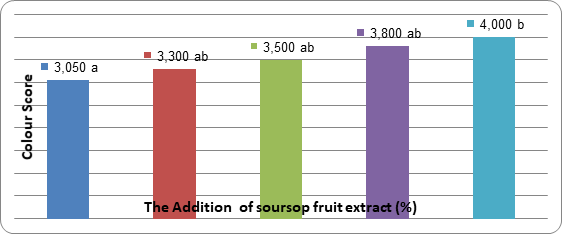
Figure 4 Graphic effect of fermentation time against the degree of color score sweet corn milk yogurt.
In the graph above shows that the highest color score was obtained in the T5 treatment of 4,000 with light yellow criteria, this is because the ratio of the addition of soursop extract is high, namely 50ml soursop fruit extract + 200ml sweet corn milk. Adding white soursop fruit extract to corn milk The sweet yellow color causes the color of the sweet corn milk yogurt to be light yellow and is liked by panelists. According to Rahman,13 color is a material property that is ascribed to the spread of the spectrum of light, as well as the shiny nature of the material affected by light, especially reflected light. Color is not a substance or an object but a person's sensation because of the stimulation of a beam of radiation energy that falls into the eye's senses or retina.
Smell score
In Table 2, Column 2 (smell value) shows that the relationship between the ratio of the addition of soursop extract to the smell value of sweet corn milk yogurt has increased and the results of panelists' assessment favored the smell of sweet corn milk yogurt with the addition of more soursop fruit extracts. The relationship graph of the effect of adding soursop extract to the smell value score can be seen in Figure 5.

Figure 5 Graphic effect of fermentation time against the degree of smell score sweet corn milk yogurt.
The highest score of sweet corn milk yogurt smell value obtained at T5 treatment was 4.150 with the criteria of liking, the lowest value was at T1 treatment at 2.50 with the criterion of being disliked without adding soursop fruit extract. The high level of panelists' preference for the T5 treatment was caused by the highest ratio of soursop extract extraction which was 50ml, causing the basic smell to decrease and the soursop smell to stand out. The T5 treatment ratio of the addition of soursop fruit extract ie soursop fruit extract 50ml + 200ml sweet corn milk is more preferable to the smell so that it produces sweet corn milk yogurt with a smell preferred by panalis.
The addition of soursop fruit extract affects the value of the smell value of yogurt. The distinctive smell felt by the sense of smell depends on the constituent ingredients and ingredients added to the food.13 Meanwhile, according to (Winarno, 1997), smell or smell can be defined as something that can be observed with the sense of smell. Fragrance substances can evaporate, slightly insoluble in water and slightly insoluble in fat. The smell or odor caused by many foods determines the delicacy of these foods.
The smell of a food or beverage product has an important role in evaluating its appearance, because if the food or drink has a distinctive smell, then the food product can be said to be good. In the food industry, testing of smells is considered important, because it can quickly provide an assessment of the product regarding whether or not the food product is accepted, and is an indicator of damage to food or beverage products. The odor generated is generally caused by chemical changes and the form of compounds with other ingredients, for example between amino acids resulting from changes in protein with reducing sugars that form compounds of flavor and smell of food.
Value of taste
Generally food ingredients or food products do not only consist of one taste, but are a combination of various kinds of flavors in an integrated manner, giving rise to a whole flavor.14 In Table 2, The third column (taste value), shows that the score of sweet corn milk yogurt flavor scores has increased in line with the increasing addition of soursop fruit extract in each treatment. The results of the assessment of the taste of yogurt are more relative for each panelist and generally prefer the sweet corn milk yogurt which uses a high concentration of soursop fruit extract. The relationship graph of the effect of adding soursop fruit extract to the score of sweet corn milk yogurt flavor values can be seen in Figure 6.
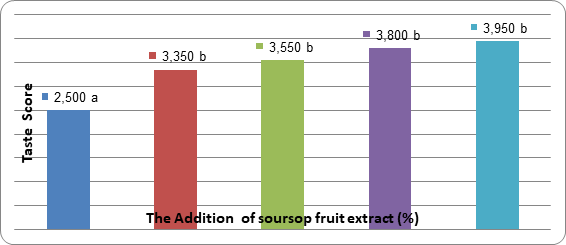
Figure 6 Graphic effect of fermentation time against the degree of taste score sweet corn milk yogurt.
Taste is an important factor among other factors related to organoleptic and the quality of food products. Taste usually consists of components contained in the raw material of manufacture or from ingredients that are intentionally added to improve the quality of the food product.15 The highest taste value obtained at T5 treatment is 3,950 with criteria like. The lowest value was in the T1 treatment of 2.50, without the addition of soursop fruit extract with the criteria not preferred. This is due to the treatment of T5 with the addition of soursop fruit extract 50ml + 200ml of corn milk to produce a specific taste and is preferred by panelists. The T5 treatment is very suitable for corn milk yogurt. However, the addition of excess soursop fruit extract will cause flavor excessive wrying. According to Winarno,14 consumer acceptance of highly acidic yogurt is usually unsatisfactory.
Value of thickness
The texture is an important aspect of food or beverage quality. Texture and mouthfeel are also an important parameter. The most important characteristic for evaluating food is its thickness and water content. The texture is sometimes more important than smell, taste, and color.14 Clotting can be caused by enzyme activity or acid addition. In Table 2, Column 4 (viscosity value) shows the viscosity score of sweet corn milk yogurt has decreased. The relationship graph of the effect of adding soursop fruit extracts to the scores the thickness of sweet corn milk yogurt can be seen in Figure 7.
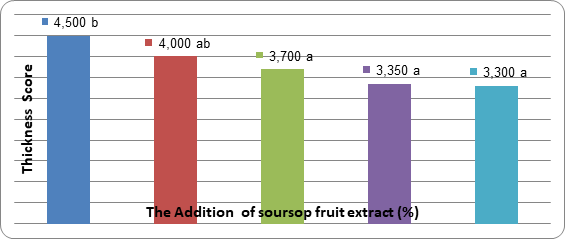
Figure 7 Graphic effect of fermentation time against the degree of smell score sweet corn milk yogurt.
The highest viscosity value was obtained in the T1 treatment that is equal to 4,500 with the viscous criteria and the lowest viscosity value obtained at T5 treatment that is equal to 3300 with slightly viscous criteria. The high score of panelists on the T1 treatment was due to the T1 treatment without the addition of soursop fruit extract so that the thickness of the sweet corn milk yogurt became thick and not so favored by the panelists. This is supported by the opinion of Rahman,13 that the addition of soursop fruit extract will change the thickness of sweet corn milk yogurt due to the excessive concentration of soursop fruit extract, while in T5 treatment the score of 3,300 (slightly thick) is preferred by panelists. This is due to the addition of soursop fruit extracts that is equal to 200ml, thus resulting in the level of viscosity of sweet corn milk yogurt which is preferred by panelists compared to other treatments.16-28
Based on the results of research and discussion, the following conclusions can be made:
Based on the results of research conducted, suggestions can be made as follows:
None.
Authors declare that there is no conflict of interest.

©2021 Saputrayadi, et al. This is an open access article distributed under the terms of the, which permits unrestricted use, distribution, and build upon your work non-commercially.